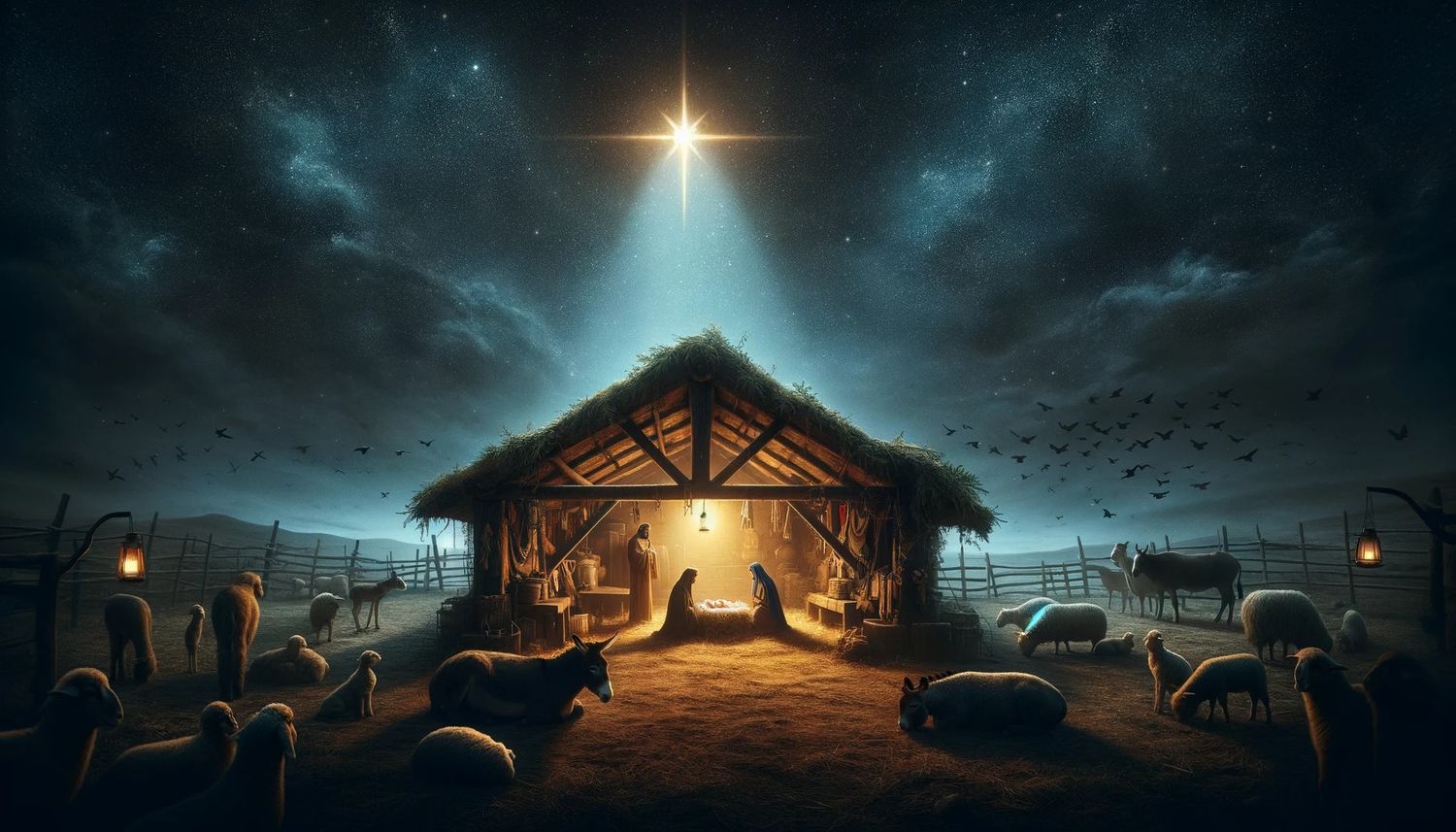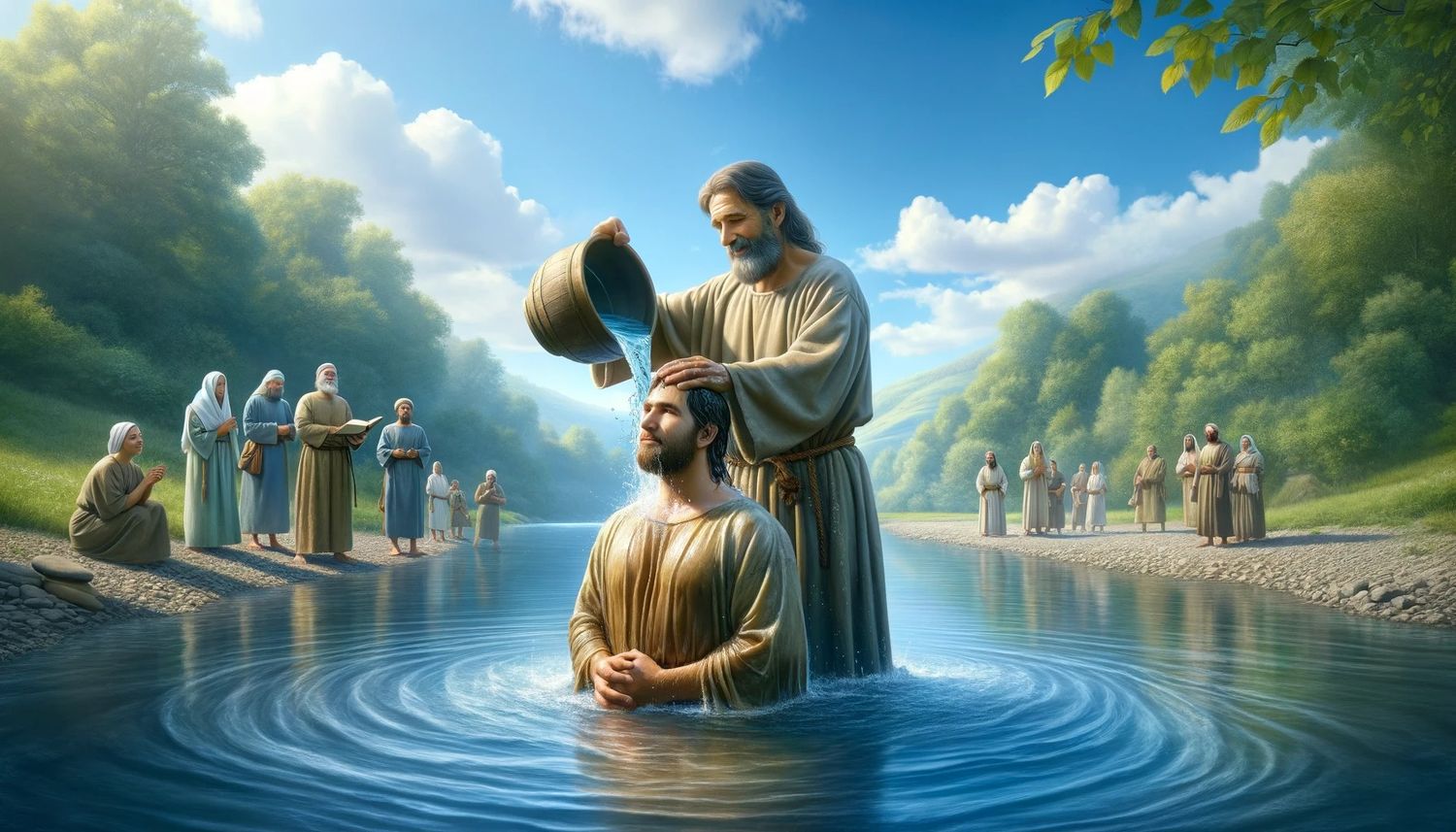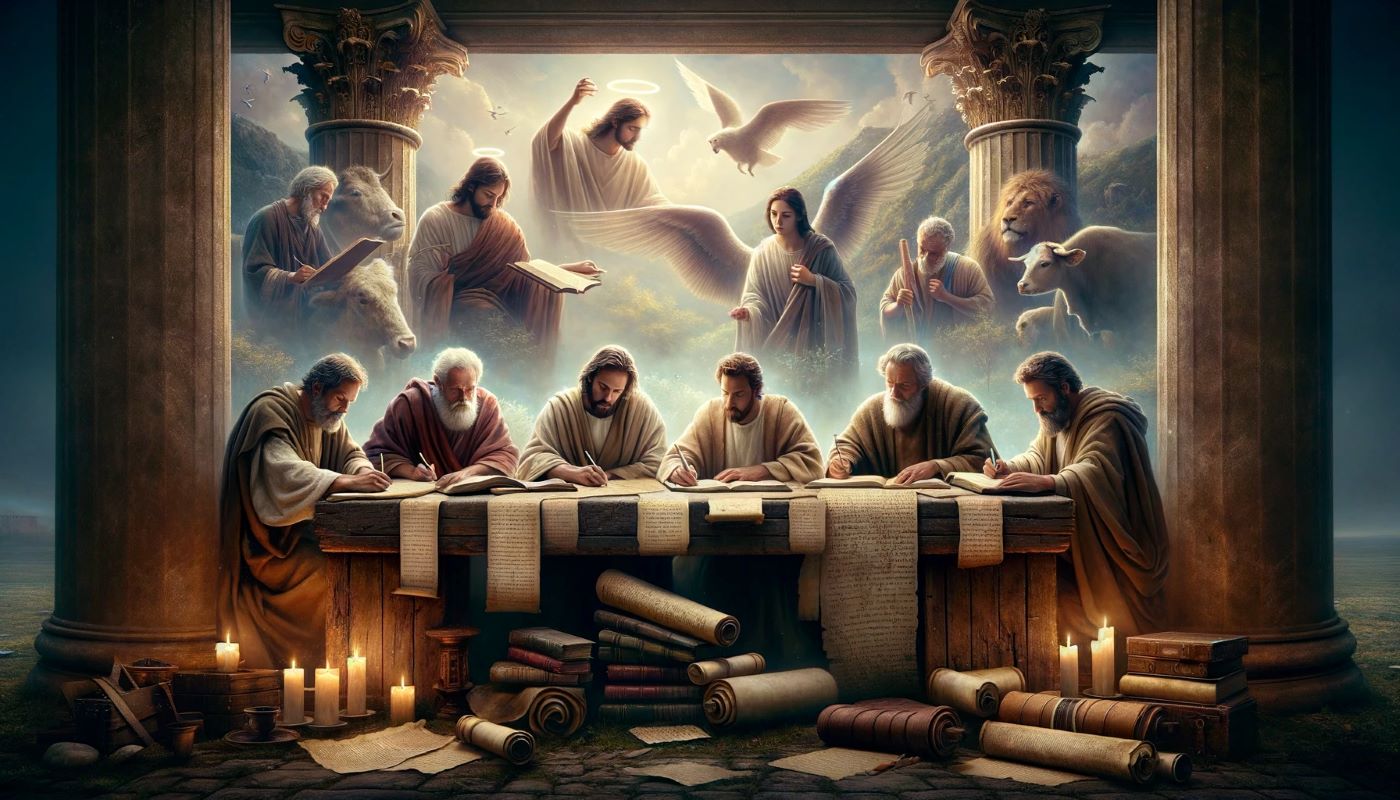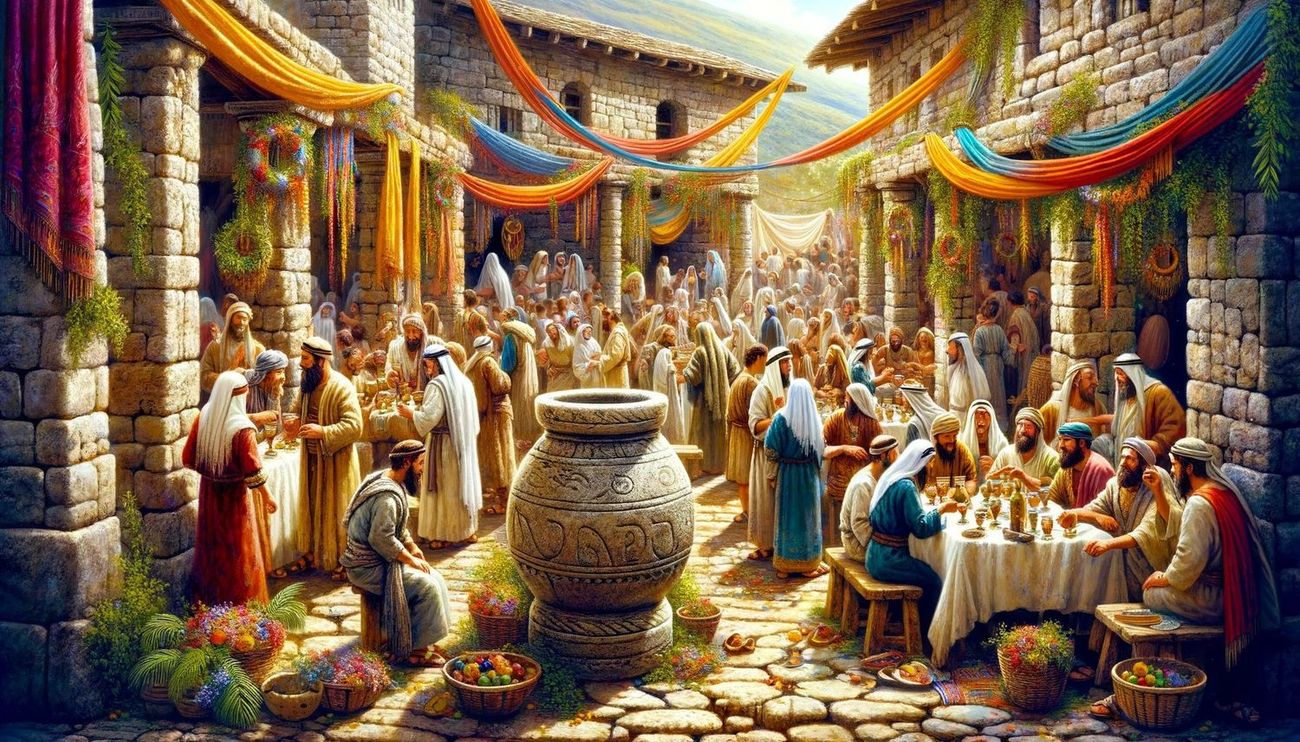Home>Christian Videos>Bible Stories>Which Gospels Have The Last Supper


Bible Stories
Which Gospels Have The Last Supper
Published: March 6, 2024
Peter Smith, Editorial Director at Christian.net, combines deep insights into faith, politics, and culture to lead content creation that resonates widely. Awarded for his contributions to religious discourse, he previously headed a major organization for religious communicators, enhancing dialogue on faith's societal impacts.
Discover the biblical accounts of the Last Supper in the Gospels. Explore the significance of this pivotal event in the Bible stories. Gain insights into the narratives of the Last Supper.
(Many of the links in this article redirect to a specific reviewed product. Your purchase of these products through affiliate links helps to generate commission for Christian.net, at no extra cost. Learn more)
Table of Contents
Introduction
The Last Supper is a significant event in Christianity, marking the final meal that Jesus shared with his disciples before his crucifixion. It is a momentous occasion that holds deep spiritual and symbolic meaning for Christians around the world. The Last Supper is depicted in the four Gospels of the New Testament, each providing unique perspectives and details about this pivotal event. In this article, we will explore which Gospels contain the account of the Last Supper and delve into the distinct portrayals presented in each Gospel.
Read more: Which Religions Have Communion
The Last Supper in the Gospel of Matthew
The Gospel of Matthew, one of the four canonical Gospels, provides a detailed account of the Last Supper. In Matthew 26:17-30, the narrative unfolds with Jesus instructing his disciples to prepare for the Passover meal. During the meal, Jesus makes a profound statement, saying, "Take, eat; this is my body," as he distributes bread to the disciples. He then offers them a cup of wine, symbolizing his blood, and instructs them to drink from it, emphasizing the establishment of a new covenant. This symbolic act of sharing bread and wine has become the basis for the Christian sacrament of Holy Communion or the Eucharist, signifying the spiritual nourishment and unity of believers with Christ.
The Gospel of Matthew also records Jesus' prediction of his betrayal by one of the disciples present at the Last Supper. This prophecy underscores the somber tone of the gathering, as Jesus forewarns his closest followers of the impending betrayal and his forthcoming crucifixion. The account in Matthew highlights the emotional intensity of the Last Supper, portraying Jesus' deep sense of purpose and the disciples' bewildered reactions to his revelations.
Furthermore, the Gospel of Matthew uniquely includes the episode of Jesus' prediction of Peter's denial. Jesus foretells that Peter will disown him three times before the rooster crows, a poignant moment that foreshadows the events that will transpire following the Last Supper. This distinctive addition in Matthew's narrative adds a layer of complexity to the portrayal of the disciples' responses and their individual relationships with Jesus during this crucial gathering.
In summary, the Gospel of Matthew presents a rich and multifaceted depiction of the Last Supper, emphasizing the symbolic significance of the bread and wine, Jesus' prophetic insights, and the emotional dynamics among Jesus and his disciples. The account in Matthew contributes to the comprehensive understanding of this pivotal event in Christian theology and spirituality.
The Last Supper in the Gospel of Mark
The Gospel of Mark, another canonical Gospel, also contains the account of the Last Supper. In Mark 14:12-26, the narrative unfolds with Jesus instructing his disciples to prepare for the Passover meal, similar to the account in Matthew. During the meal, Jesus takes bread, blesses it, and gives it to his disciples, stating, "Take; this is my body." He then takes a cup, gives thanks, and offers it to them, and they all drink from it. This act of sharing bread and wine symbolizes the impending sacrifice of Jesus' body and the establishment of a new covenant, mirroring the portrayal in Matthew's Gospel.
Mark's account of the Last Supper also includes Jesus' prediction of his betrayal, echoing the somber tone of the gathering as depicted in Matthew. Jesus reveals that one of the disciples will betray him, signifying the impending betrayal and the fulfillment of divine prophecy. This prediction adds a layer of tension and anticipation to the Last Supper, emphasizing the dramatic and foreboding atmosphere surrounding the events leading up to Jesus' crucifixion.
Furthermore, the Gospel of Mark highlights Jesus' prediction of Peter's denial, similar to the account in Matthew. Jesus foretells that Peter will disown him three times before the rooster crows twice, underscoring the poignant foreshadowing of Peter's actions following the Last Supper. This prediction serves as a poignant reminder of the human frailty and fallibility of Jesus' closest disciples, adding depth to the portrayal of their responses and actions during this crucial gathering.
In summary, the Gospel of Mark presents a poignant and evocative depiction of the Last Supper, emphasizing the symbolic significance of the bread and wine, Jesus' prophetic insights, and the emotional dynamics among Jesus and his disciples. The account in Mark contributes to the profound understanding of this pivotal event in Christian theology and spirituality, offering a unique perspective on the Last Supper and its enduring significance for believers.
The Last Supper in the Gospel of Luke
The Gospel of Luke, one of the synoptic Gospels, presents a distinctive portrayal of the Last Supper. In Luke 22:7-23, the narrative unfolds with Jesus sending Peter and John to make preparations for the Passover meal, showcasing Jesus' deliberate and purposeful actions leading up to the Last Supper. As the disciples gather for the meal, Jesus takes the bread, blesses it, breaks it, and gives it to them, saying, "This is my body, which is given for you. Do this in remembrance of me." Similarly, he takes the cup after supper, stating, "This cup that is poured out for you is the new covenant in my blood." Luke's account emphasizes the sacrificial nature of Jesus' impending death and the establishment of a new covenant, echoing the symbolic significance of the bread and wine in the Last Supper.
The Gospel of Luke uniquely includes Jesus' profound statement to his disciples during the Last Supper, "But the hand of him who is going to betray me is with mine on the table." This declaration adds a layer of tension and suspense to the gathering, as Jesus reveals the presence of betrayal among his closest followers, heightening the dramatic intensity of the Last Supper. Additionally, Luke's narrative emphasizes the disciples' response to Jesus' impending betrayal, highlighting their confusion and concern as they question among themselves who among them would commit such an act. This distinctive portrayal in Luke's Gospel underscores the emotional and psychological dynamics at play during this pivotal moment in Jesus' ministry.
Furthermore, the Gospel of Luke features a significant emphasis on the theme of servanthood during the Last Supper. Following Jesus' prediction of his betrayal, a dispute arises among the disciples about who is considered the greatest among them. In response, Jesus conveys a powerful message about humility and servanthood, stating, "The kings of the Gentiles lord it over them; and those who exercise authority over them call themselves Benefactors. But you are not to be like that. Instead, the greatest among you should be like the youngest, and the one who rules like the one who serves." This emphasis on humility and servanthood in Luke's account adds a profound dimension to the Last Supper, highlighting Jesus' teachings on selflessness and the inversion of societal norms within the Kingdom of God.
In summary, the Gospel of Luke offers a nuanced and multifaceted portrayal of the Last Supper, emphasizing the symbolic significance of the bread and wine, Jesus' revelation of betrayal, and the profound teachings on servanthood. The account in Luke contributes to a comprehensive understanding of this pivotal event in Christian theology and spirituality, providing unique insights into the emotional, relational, and ethical dimensions of the Last Supper.
The Last Supper in the Gospel of John
The Gospel of John presents a distinctive and profound account of the Last Supper, offering unique insights into this pivotal event. In John 13:1-17, the narrative unfolds with Jesus demonstrating an act of humility and servanthood by washing the feet of his disciples. This symbolic gesture not only serves as a powerful example of selfless love and humility but also sets the tone for the profound teachings and revelations that transpire during the Last Supper in John's Gospel.
John's account of the Last Supper features a significant emphasis on Jesus' teachings and discourses, particularly his extended farewell discourse to his disciples. This discourse spans several chapters (John 14-17) and encompasses profound theological and ethical teachings, emphasizing the themes of love, unity, and the promise of the Holy Spirit. Jesus reassures his disciples, promising to send them the Advocate, the Spirit of Truth, who will guide them and dwell within them. This emphasis on the role of the Holy Spirit and the intimate relationship between Jesus, the disciples, and the divine presence adds a unique dimension to the Last Supper in John's Gospel, highlighting the spiritual depth and interconnectedness of believers within the Christian faith.
Furthermore, the Gospel of John uniquely portrays the Last Supper as the occasion for the institution of the "new commandment" of love. Jesus instructs his disciples, saying, "A new command I give you: Love one another. As I have loved you, so you must love one another. By this everyone will know that you are my disciples if you love one another." This profound injunction underscores the centrality of love within the Christian faith and the transformative power of selfless, sacrificial love as the defining characteristic of Jesus' followers. John's account of the Last Supper thus emphasizes the ethical imperative of love and unity among believers, encapsulating the essence of Jesus' teachings and mission.
Moreover, the Gospel of John uniquely omits the detailed narration of the Eucharistic elements of bread and wine during the Last Supper, focusing instead on the symbolic act of foot washing and the theological discourses that ensue. This distinctive portrayal underscores John's emphasis on the spiritual and symbolic dimensions of the Last Supper, highlighting the profound teachings and revelations that unfold within the intimate setting of the gathering.
In summary, the Gospel of John offers a profound and spiritually rich portrayal of the Last Supper, emphasizing the themes of humility, love, unity, and the promise of the Holy Spirit. The account in John contributes to a comprehensive understanding of this pivotal event in Christian theology and spirituality, providing unique insights into the ethical, relational, and spiritual dimensions of the Last Supper.
Read more: Which Disciples Wrote Gospels
Conclusion
The Last Supper is a profound and pivotal event in Christianity, symbolizing the sacrificial death of Jesus Christ and the establishment of a new covenant. The accounts of the Last Supper in the Gospels of Matthew, Mark, Luke, and John offer unique perspectives and insights into this momentous occasion. Each Gospel contributes to a comprehensive understanding of the Last Supper, emphasizing the symbolic significance of the bread and wine, Jesus' prophetic insights, the emotional dynamics among Jesus and his disciples, and the profound teachings and revelations that transpire during this sacred gathering. The diverse portrayals of the Last Supper in the Gospels enrich the theological and spiritual significance of this event, providing believers with a multifaceted understanding of its enduring impact on Christian faith and practice.














